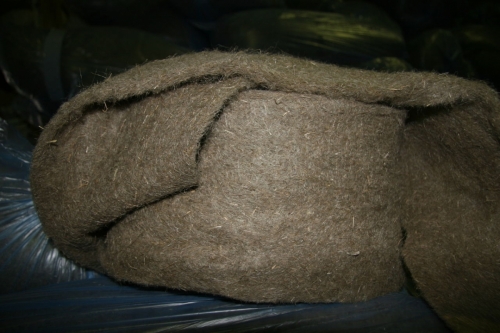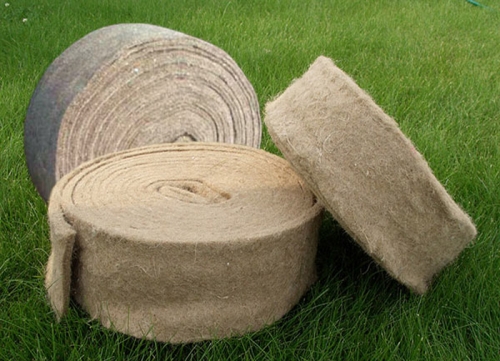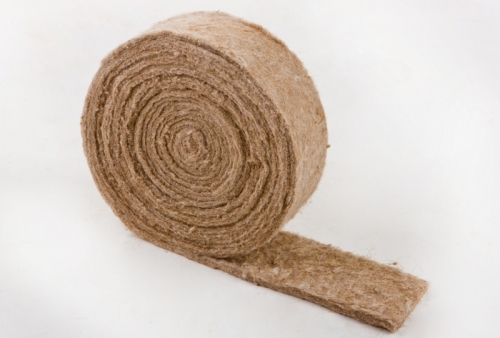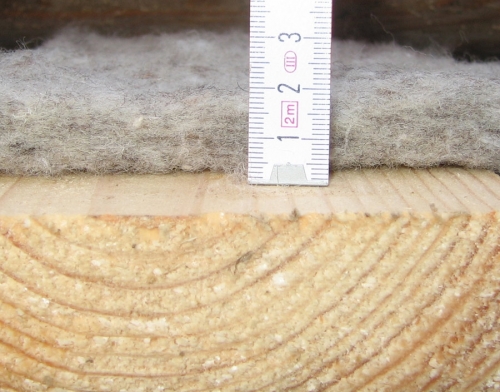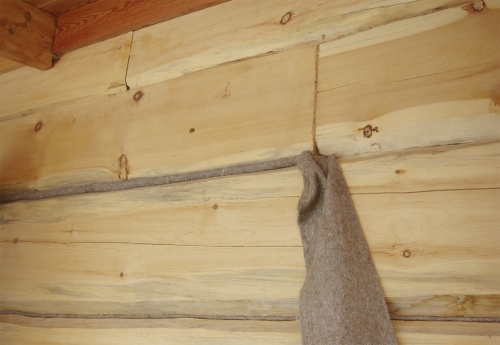Among several options for insulation of the facade, mineral wool is the greatest ...
|
|
In modern society, construction and repair are in demand, and ... |
Every year exponentially, the number of owners of apartments increases, ... |
Interventive insulation for timber: Subtleties of choice
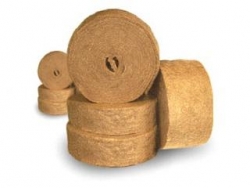
Everyone dreams of a house from a log house. Even those who do not admit this. After all, people are children of nature, so the desire to periodically touch it on a subconscious level lives in all. And the wooden house allows this desire to fulfill as much as possible. More precisely, to combine modern comfort with naturalness and naturalness. The article will talk about the choice of intervention insulation for timber.
Content:
- What is the intervention insulation for
- Intervented insulation which to choose
- Proper laying of intervention insulation
- Synthetic intervention heater
It can be said about wood that it, as a building material, makes the climate in the room almost ideal for life. In such a house is warm and fresh at the same time, strong winds and scorching heat are not afraid of it. In a word, an ideal balance of oxygen and moisture is formed inside the room, and the risk of allergic reactions is also reduced to zero.
But the desire to become the owner of a wooden house, and to do this in the shortest possible time, often ends with disappointment. Since a lot of construction teams, promising a quick and high -quality log house, ultimately hand over a poor -quality work, which, unfortunately, is sometimes simply not possible to fix it. No matter how great the desire to get rid of unnecessary troubles associated with construction is to delve into certain subtleties, even if the builders have proven themselves perfectly at other facilities. And one of these subtleties is the choice of intervention insulation.
What is the intervention insulation for
- In order for all of the above advantages of wooden buildings to be relevant, it is not enough to choose high -quality wood.
- It doesn’t matter if it will be a log house or a beam, but if when erecting a house you can’t lay a layer of insulation between them, the structure can not only lose certain qualities, but simply become unsuitable for housing.
- After all, a wooden house can be called an organism that moves and breathes. These metamorphoses occur due to the fact that the level of humidity in it is constantly subjected to differences. It changes due to natural and human factors inside the house, plus the wood itself actively gives moisture.
- And it is the intervention insulation that provides perfect vapor barrier during such metamorphoses. It is laid not only between logs, but also around the perimeter of window and doorways, and also used to warm the roof.
It is after laying the insulation that the house becomes the owner of such qualities as:
- stability to blowing (gaps are simply excluded);
- low thermal conductivity (heat does not leave);
- excellent steam and moisture permeability (correctly gives and absorbs moisture).
As a result, the wooden structure pleases more than one generation of its owners.
Intervented insulation which to choose
Already in the phrase itself, a wooden house has something very warm, traditional and believing antiquity.
- Accordingly, the intervention insulation here is sometimes used very extraordinary. For example, moss, flax (Lnovatin), felt (sheep’s wool), jute, Packl.
- Of course, unscrupulous builders also offer such types of insulation as polystyrene foam, polyurethane foam, acrylic and silicone sealants, mineral wool, rubber. That is, synthetic materials made artificially.
- Perhaps they are good in many situations, but it is not recommended to choose them for insulation of a wooden house. Why will it be said later.
- But relative to the above natural options, we can say that it is thanks to their properties that the wooden structure will begin to breathe.
Intervented insulation moss
- Surprisingly, it sounds, but the moss to this day remains the most reliable, popular and affordable intervention insulation. From ancient times, wooden houses were erected precisely with the help of this layer.
- Perhaps it was the fact that the moss grew almost everywhere, contributed to such an active spread of wooden buildings. Such houses were correctly served for decades, and in case of dismantling, the logs were preserved in almost ideal condition, and therefore they could be used to build a house in a new place.
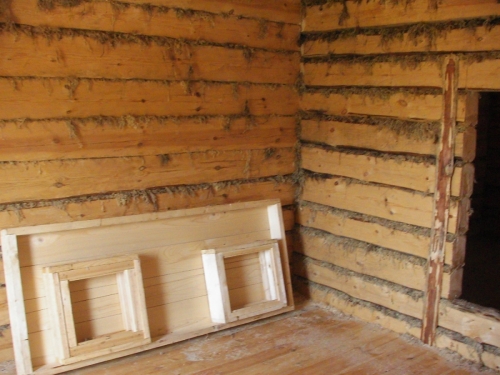
- The fact that moss in large quantities is easy to find in the forests and near the swamps, affects its ability to give and absorb moisture. And he has this quality fully, providing a wooden house with a beautiful and most natural ventilation.
- But not any moss can be used as an intervention heater. Two types are suitable for him:
- peat (white) moss or as it is also called, sphagnum;
- green (deciduous) moss, also known as Kukushkin Len.
- Of course, like all building materials, moss also has certain disadvantages, namely: a rather low fire resistance, not very good plasticity, as well as the fact that it is one of the favorite bird treats.
- Given this, the moss should not be laid in a dry form (then it becomes brittle), but also not in wet. Wet optimal option, and in the case of Kukushkin flax, it should also be fresh. It should be stacked very smoothly, across the logs, leaving a part of hanging on the sides. Here, too, the middle ground should be observed, otherwise the birds will become permanent guests.
Intervented insulation Lnovatin
- It is also called linen felt and Eurolon. Perhaps now, it is even more popular than moss, because It is more convenient in laying, and at the same time available and has all the necessary intervention heater with qualities.
- It is made of linen fibers, previously completely cleaned, and is a kind of canvas.
- Len is absolutely environmentally friendly, non -allergic, but, of course, has certain disadvantages, or rather, it is only one. On sale it is only a few sizes. This, of course, does not mean that such a popular insulation cannot be used for a home of a certain cubot. But often the installation complicates this.
- Depending on the width of the tape, you can buy Lnovatin intervention insulation at a price of 5-50 rubles. For the linear meter.
Intervented insulation tape pack
- Possessing all the necessary good heater with qualities and at the same time relatively low price, Pakly did not become the most popular material.
- This is due to the fact that, despite all the tricks, it is a building material not only for people, but also for birds. They use a pac from the nest with great hunting, so during the construction of the house they literally fly into it.
- In addition, Pacli is more prone to decay than any other material.
- But, given its positive qualities, it is reasonable to use the dad as a heater in window and door openings, on balconies and loggias. Of course, if we are talking about a natural tree.
- It should be borne in mind that Packla is divided into 2 types as a heater: jute and linen. The first is the most inexpensive, dense and tough enough. The second is a little more expensive, but at the same time softer, which means that it is seated to the desired level, it is faster.
- The conclusion can be drawn as follows: Packla is in the last place in a series of intervention heater. Its main advantage is low.
Juetry intervention insulation
- The best interventor insulation can be called such a material as jute. It actively displaces the aforementioned flax and hemp from the market (the so -called hemp fibers), which are quite problematic in growing.
- A jute insulation is a fiber of an exotic plant from a family of linden jute. From flax and hemp, jute favorably differs in the high content of lignin of unique resin, which is a real natural antiseptic. Lignin protects against decay not only the insulation itself, but also the adjacent tree.
- And jute has a pleasant golden color that is in perfect harmony with any shade of wood.
- In addition, in the construction market, juts are represented by a wide variety of sizes (supplied in rolls), which allows you to mound it without problems on any cubot.
- But the main advantage of Jute often develops into a disadvantage: in the case of an excess of lignin, the canvas becomes quite hard, rough, and therefore can be glued.
It can be found in three types:
- jute felt;
- linen jute (Len-Jut);
- juetaya Paklya.
The latter option has already been mentioned, the other two have the following qualities.
- Jute felt. It contains at least 90% jute. Often such material becomes too hard and therefore uneven when laying. To that, he can crumble. To avoid all this, in jute felt, conscientious manufacturers add flax, which significantly softens all the shortcomings. Flax in the composition should be approximately 10%. Those. 100% jute felt should not be used as intervention insulation, even with all its external attractiveness.
- Len-jute. Here, the ratio of flax and jute is radically different. Each manufacturer has different, as a result, and the characteristics of such insulation are slightly different.
A combination of 50%x50%is considered ideal. Such an interventional insulation combines all the best qualities of its components of the materials: the strength and rigidity of jute, the softness and plasticity of the flax. Len is located inside the canvas, the jute as if protecting it from all sides. The result is a great option: very durable and persistent. It is such a heater that is most reasonable to use not only during the construction of the house, but in the construction of such problematic objects in matters of humidity as baths and saunas.
On average, the price of interventor insulation for a beam from jute is 140-250 rubles/20 m.
Sheep wool as intervention insulation
- If we omit such a drawback of this variant of insulation as a high price, then sheep's wool with full right put in a leading position relative to quality indicators.
- So far, only imported insulation is available on the market. And this is not surprising, because, if the moss in the role of insulation is the original Slavic invention, then the wool has long been used for these purposes in North America and Europe, where they first noticed that in its thermal insulation qualities it is very similar to wood. Although, compared to it, he gives moisture worse, while absorbing it perfectly.
- This drawback was eliminated by manufacturers thanks to a specially developed composition. They also successfully fought with the risk of mushrooms and all kinds of insects.
- As a result, it turned out to be an excellent interventional insulation not only that exceeds the technical indicators, but also with a very useful property, it not only perfectly insulates the house, but also serves as an excellent seal.
Proper laying of intervention insulation
- With the apparent complexity of the process, the installation of the insulation occurs according to almost one scheme, despite what material the choice was made.
- First, a layer of insulation is placed on a log by rolling along the entire length, and the next log is laid on top, which will fix it. For reliability of fastening, you can use the furniture stapler.
- In no case should the insulation slide into a thin tourniquet, on the contrary, its edges should hang on the sides by at least 5 cm, after it is clamped by logs. These surpluses will need to be pulled deep into the chisel. In the construction language, this is called the primary log.
- After a year, when the structure gives the necessary shrinkage, this process must be repeated.
Synthetic intervention heater
The fact that a wooden house implies the use of natural intervention heater is said above. But many doubt: perhaps new technologies allow you to use synthetic materials? After all, filling the cracks with a sealant, for example, is much easier and faster than messing with moss. And the cost of such work will be lower.
- Of course, this is so. But synthetic heater does not give the effect of a living house that wooden buildings are so famous for. If it is insulated with the help of materials, the poor time (polyurethane and similar), the house will simply suffocate under a protective film.
- Porous synthetic heater, such in demand in many types of construction work (the same mineral wool), can also be destructive for a wooden house. The fact is that, absorbing moisture, they do not change their size, as the wood requires. As a result, the cracks are guaranteed that, in turn, many other problems are drawn.
In a word, choosing an intervention insulation, the choice must be stopped exclusively on natural materials.



